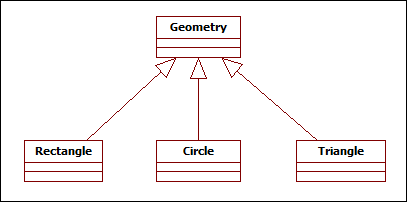환경은 ArcSDE 9.2이고.. ArcSDE 서비스 팩은 설치하지 않았으며 오라클은 10g 버전입니다. 그리고 ArcSDE에 대한 자바 API는 ArcSDE 9.2 서비스팩6에 해당합니다. 참고로 자바 API를 구성하는 jar 파일은 다음과 같으며 모두 반드시.. 필요합니다.
- jsde92_sdk.jar
- jpe92_sdk.jar
- icu4j_3_2.jar
네.. 이제 ArcSDE와 연동하기 위한 자바 API에 대해 살펴보겠습니다.. 먼저 연결에 대한 코드입니다..
import java.util.*;
import com.esri.sde.sdk.client.*;
public class MainEntry {
@SuppressWarnings("unchecked")
public static void main(String[] args) {
SeConnection conn = null;
String server = "192.168.0.18";
int service = 5151;
String database = "";
String user = "na_gis";
String password = "na_gis";
try {
conn = new SeConnection(server, service, database, user, password);
Vector layerList = conn.getLayers();
System.out.println(layerList.size() + " layers existed... ");
for(int i=0; i
위의 코드는 연결뿐만 아니라 연결된 ArcSDE 서버가 관리하고 있는 레이어 개수와 이름을 화면에 출력합니다.
다음은 레이어를 구성하는 필드 정보를 얻어 오는 코드입니다.
import java.util.*;
import com.esri.sde.sdk.client.*;
public class MainEntry {
@SuppressWarnings("unchecked")
public static void main(String[] args) {
SeConnection conn = null;
String server = "192.168.0.18";
int service = 5151;
String database = "";
String user = "na_gis";
String password = "na_gis";
try {
conn = new SeConnection(server, service, database, user, password);
Vector tableList = conn.getTables(SeDefs.SE_SELECT_PRIVILEGE);
System.out.println(tableList.size() + " table existed... ");
for(int i=0; i
필드 정보는 레이어 개념이 아닌 테이블 개념으로 가져와야 합니다. 레이어는 테이블 + 도형 데이터 쯤으로.. 생각하면 됩니다.
다음은 테이블의 특정 필드(들)의 값을 얻어오는 코드입니다.
import java.util.*;
import com.esri.sde.sdk.client.*;
public class MainEntry {
@SuppressWarnings("unchecked")
public static void main(String[] args) {
SeConnection conn = null;
String server = "192.168.0.18";
int service = 5151;
String database = "";
String user = "na_gis";
String password = "na_gis";
try {
conn = new SeConnection(server, service, database, user, password);
Vector tableList = conn.getTables(SeDefs.SE_SELECT_PRIVILEGE);
SeTable tbl = (SeTable)tableList.get(89);
SeSqlConstruct sqlConstruct =
new SeSqlConstruct(tbl.getQualifiedName());
String[] cols = new String[1];
cols[0] = "IST_YMD";
SeQuery query = new SeQuery(conn, cols, sqlConstruct);
query.prepareQuery();
query.execute();
SeRow row;
while((row = query.fetch()) != null)
{
String value = row.getString(0);
System.out.println(value);
}
} catch(SeException e) {
e.printStackTrace();
}
}
}
얻어온 테이블 리스트(Vector tableList)에서 인덱스 번호 89에 해당하는 테이블의 IST_YMD 필드에 대한 값을 뽑아 내 화면에 표시합니다. 만약 SQL의 Where 구문을 지정하고자 한다면 SeSqlConstruct sqlConstruct 객체의 매서드 setWhere에 구문을 지정하면 됩니다. 예를 들면.. 만약 필드 ADM_NAM에 대해서 '목'으로 시작하는 조건의 경우는 다음과 같습니다.
....
sqlConstruct.setWhere("ADM_NAM LIKE '목%'");
....
다음은 레이어에서 도형에 대한 좌표를 표시하는 코드입니다.
import java.util.*;
import com.esri.sde.sdk.client.*;
public class MainEntry {
@SuppressWarnings("unchecked")
public static void main(String[] args) {
SeConnection conn = null;
String server = "192.168.0.18";
int service = 5151;
String database = "";
String user = "na_gis";
String password = "na_gis";
try {
conn = new SeConnection(server, service, database, user, password);
Vector layerList = conn.getLayers();
SeLayer lyr = (SeLayer)layerList.get(4);
SeSqlConstruct sqlConstruct =
new SeSqlConstruct(lyr.getQualifiedName());
String[] cols = new String[3];
cols[0] = "BD_NM";
cols[1] = "BD_MGT_SN";
cols[2] = "SHAPE";
SeQuery query = new SeQuery(conn, cols, sqlConstruct);
query.prepareQuery();
query.execute();
SeRow row;
while((row = query.fetch()) != null)
{
SeShape shp = row.getShape(2);
double coordinates[][][] = shp.getAllCoords();
System.out.println("coordinates.length = " + coordinates.length);
System.out.println("coordinates[0].length = " + coordinates[0].length);
System.out.println("coordinates[0][0].length = " + coordinates[0][0].length);
double partCoords[] = coordinates[0][0];
for(int i=0; i
얻어온 레이어 리스트(Vector layerList)에서 인덱스 4번에 해당하는 레이어에 대해서 필드 BD_NM, BD_MGT_SN 그리고 좌표에 대한 값이 담긴 SHPAE 필드를 지정해 쿼리를 실행합니다. 위의 코드는 지정된 레이어에 대한 모든 레코드를 읽어 오게 됩니다. 여기에 제한을 두어 지정된 MBR에 포함되거나 교차하는 레코드만을 얻어오는 코드는 다음과 같습니다.
import java.util.*;
import com.esri.sde.sdk.client.*; public class MainEntry {
@SuppressWarnings("unchecked")
public static void main(String[] args) {
SeConnection conn = null;
String server = "192.168.0.18";
int service = 5151;
String database = "";
String user = "na_gis";
String password = "na_gis";
try {
conn = new SeConnection(server, service, database, user, password);
Vector layerList = conn.getLayers();
SeLayer lyr = (SeLayer)layerList.get(4);
SeSqlConstruct sqlConstruct =
new SeSqlConstruct(lyr.getQualifiedName());
String[] cols = new String[3];
cols[0] = "BD_NM";
cols[1] = "BD_MGT_SN";
cols[2] = "SHAPE";
SeQuery query = new SeQuery(conn, cols, sqlConstruct);
query.prepareQuery();
// Add New Codes
SeShape filterShape = new SeShape(lyr.getCoordRef());
SeExtent ext = new SeExtent(148574, 146403, 148587, 146412);
filterShape.generateRectangle(ext);
SeShapeFilter filter = new SeShapeFilter(lyr.getQualifiedName(),
lyr.getSpatialColumn(), filterShape, SeShapeFilter.METHOD_AI);
SeShapeFilter[] filters = new SeShapeFilter[1];
filters[0] = filter;
query.setSpatialConstraints(SeQuery.SE_SPATIAL_FIRST,
false, filters);
// At Here!
query.execute();
SeRow row;
while((row = query.fetch()) != null)
{
SeShape shp = row.getShape(2);
double coordinates[][][] = shp.getAllCoords();
System.out.println(
"coordinates.length = " + coordinates.length);
System.out.println(
"coordinates[0].length = " + coordinates[0].length);
System.out.println(
"coordinates[0][0].length = " + coordinates[0][0].length);
double partCoords[] = coordinates[0][0];
for(int i=0; i
코드 번호 29~42에 해당하는 새로운 코드가 추가되었습니다.
완전하 SELECT 구문에 대한 SQL 문으로 Row을 읽어 오는 코드는 다음과 같습니다.
import java.util.*;
import com.esri.sde.sdk.client.*;
public class TestArcSDEQuery {
public static void main(String[] args) {
SeConnection conn = null;
String server = "222.237.78.208";
int service = 5151;
String database = "";
String user = "na_gis";
String password = "na_gis";
try {
conn = new SeConnection(server, service, database, user, password);
SeQuery query = new SeQuery(conn);
query.prepareSql("SELECT * FROM CC_META");
query.execute();
SeRow row;
while((row = query.fetch()) != null)
{
int cntFields = query.getNumColumns();
SeColumnDefinition[] tableDef = row.getColumns();
for(int iField=0; iField


